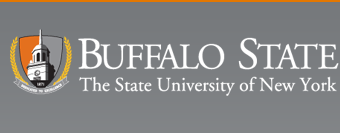
Event Title
United States of America and State of Wisconsin v. NCR Corp. et al.: Serving as an Expert Witness for the Department of Justice
Start Date
31-10-2013 11:00 AM
Description
The Fox River begins at Lake Winnebago and flows northeast for 63 km where it enters Green Bay and Lake Michigan. The river includes the highest concentration of pulp and paper mills in the world and from 1954 until the early 1970s, these mills used PCBs in their operations, releasing ~250,000 pounds of PCBs and contaminating 11 million tons of sediment. A 2006 agreement between EPA and Wisconsin Department of Natural Resources and NCR Corporation and other paper companies resulted in a multi-year cleanup effort - the largest cleanup of PCBs from a waterway in the US - that includes dredging to remove sediment and capping the river bottom with sand and gravel. Since the agreement, companies EPA considers responsible for PCB contamination have been required by judicial order to continue dredging and complete the cleanup. The financial stakes for the companies are huge with the cost of the cleanup estimated at over $1 billion. In June 2013, I was retained as an expert witness by the Department of Justice Environment & Natural Resources Division as they prepared for a trial to determine if the companies must comply with the earlier decision requiring them to continue cleaning up the river. My involvement included reviewing reports, conducting fieldwork to evaluate sediment transport patterns, and identifying sedimentary processes in the lower Fox River. Last fall, teams of attorneys representing the defendants deposed me and I testified during the trial. This presentation describes my experiences as an expert witness and the post-trial ruling.
United States of America and State of Wisconsin v. NCR Corp. et al.: Serving as an Expert Witness for the Department of Justice
The Fox River begins at Lake Winnebago and flows northeast for 63 km where it enters Green Bay and Lake Michigan. The river includes the highest concentration of pulp and paper mills in the world and from 1954 until the early 1970s, these mills used PCBs in their operations, releasing ~250,000 pounds of PCBs and contaminating 11 million tons of sediment. A 2006 agreement between EPA and Wisconsin Department of Natural Resources and NCR Corporation and other paper companies resulted in a multi-year cleanup effort - the largest cleanup of PCBs from a waterway in the US - that includes dredging to remove sediment and capping the river bottom with sand and gravel. Since the agreement, companies EPA considers responsible for PCB contamination have been required by judicial order to continue dredging and complete the cleanup. The financial stakes for the companies are huge with the cost of the cleanup estimated at over $1 billion. In June 2013, I was retained as an expert witness by the Department of Justice Environment & Natural Resources Division as they prepared for a trial to determine if the companies must comply with the earlier decision requiring them to continue cleaning up the river. My involvement included reviewing reports, conducting fieldwork to evaluate sediment transport patterns, and identifying sedimentary processes in the lower Fox River. Last fall, teams of attorneys representing the defendants deposed me and I testified during the trial. This presentation describes my experiences as an expert witness and the post-trial ruling.

